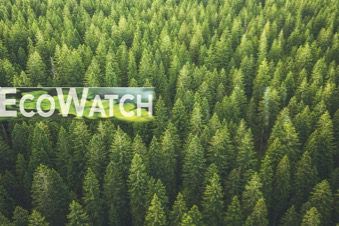EcoWatch: Sea turtles vs Plastics = Demise

“Sea turtles have stood the test of time. They are among the oldest living creatures on Earth. Their origins date back at least 110 million years ago, when dinosaurs roamed the earth. But plastic pollution threatens the future of these amazing survivors. At least 11 million metric tons of plastic pollution enter the ocean per year, without urgent action to cut plastic production, this number is expected to triple by 2040. With more than 170 trillion plastic particles estimated to be floating on the ocean’s surface alone – and with many more accumulating beneath the waves on the seafloor – plastic poses a serious threat to sea turtles (and all marine life).”
Plastic Pollution Coalition
Last Sunday was World Sea Turtle Day. It was a day dedicated to raising awareness about the urgent plight of sea turtles. Facing threats such as habitat loss, entanglement, and one of their worst dangers, plastic pollution.
The day was observed by many organizations to bring attention to the plight of sea turtles. Now, as we are into turtle season, it is a topic that needs addressing. The United States is home to six out of the world’s seven sea turtle species, all of which are either threatened or endangered. They are the loggerhead, hawksbill, Kemp’s Ridley, leatherback, olive ridley, and green, plus the flatback that is not included on the list.
Here are the 6 ways the World Sea Turtle Day website suggests you can help sea turtle conservation.
• Just say no to plastics: It’s estimated that more than 100 million marine animals die each year as a result of eating or getting entangled in plastic. Avoid using disposable plastic bags and bottles, skip the straw, and find alternatives to balloons. Check out some of the easy ways to reduce your plastics.
• Reduce your carbon footprint: Climate change affects the health of coral reefs, which are vital to the Hawksbill turtle’s survival. A warming planet also skews sex ratios in baby turtles, changes the abundance of prey, increases erosion of nesting beaches, and more.
• Choose responsibly caught seafood: Sea turtles are vulnerable to commercial fishing methods like trawling, longlines, and drift gill nets, becoming unwanted catch that is discarded like trash. To make turtle- friendly seafood choices, check out the Monterey Bay Aquarium’s Seafood Watch.
• Watch for items made from critically endangered Hawksbill turtle shells.
• Leave no trace: This means practicing good housekeeping when visiting a beach where turtles nest. Remove your trash (and trash left by others) and any other items that might endanger hatchlings, such as beach furniture, holes, and sand sculptures.
One among many government agencies attempting to curtail the trashing of our oceans and beaches is NOAA, the National Oceanic Atmospheric Administration. NOAA has many responsibilities. One very important one is the protection of marine mammals. Recently, it published the Marine Debris Program, writing, “Would you want to swim at a beach littered with trash? Of course not. And the animals that live in the ocean don’t either—the difference is they don’t have a choice.”
Of course, marine species often become tangled in debris, from fishing nets to six-pack rings, and mistake plastic debris for food.
“This fills their stomachs with junk they cannot digest,” NOAA reports. “Debris can also damage important habitats, like coral reefs, breaking or smothering them. Corals serve as the base of the marine ecosystem and impact all the way to you and me. Let us prevent those impacts on wildlife. We need the ocean—and everything in it. And the ocean needs us to keep it free from debris.”
Marine debris is a global problem originating from human activities. It enters waterways from both land and sea sources, such as trash, lost fishing gear, and items from vessels. Natural disasters and accidents at sea can also generate significant marine debris, including abandoned vessels and building fragments.
There is no doubt that we have had a disastrous effect on oceans and gulf waters. It is heartbreaking to know the newly hatched turtles will be ingesting microplastic, mistaking it for food, as will mature sea turtles, while pictures of sea turtles with plastic straws in their noses or entangled in some sort of plastic make it difficult for them to eat or swim.
What does this utter disregard for ocean wildlife say about us as a species? It is true that every year there are beach clean-ups throughout many states, where mounds of garbage are picked up from beach areas that contain tires, bags of garbage, plastic bottles, cigarette butts, that harm seabirds, and so on. We are a throwaway society, and it really does not matter to many where they throw their garbage. We should be thankful for those that take time every year and through the year to clean beaches that have been trashed.
According to NOAA, the United States is responsible for a larger portion of plastic waste entering the marine environment than we have previously thought. The study showed that in 2016, the United States was the largest producer of plastic waste worldwide, creating 42 million metric tons of plastic waste. During this year, the United States was the third-largest contributor to mismanaged plastic waste, with as much as 1-45 million metric tons of plastic debris estimated to have entered the coastal environment from the United States. Shame on us.
Swim on ancient mariner until you find your pathways blocked by mounds of plastic; then it will be way too late.
Find out more: marinedebris.noaa.gov
email: gaiasvigil@gmail.com








